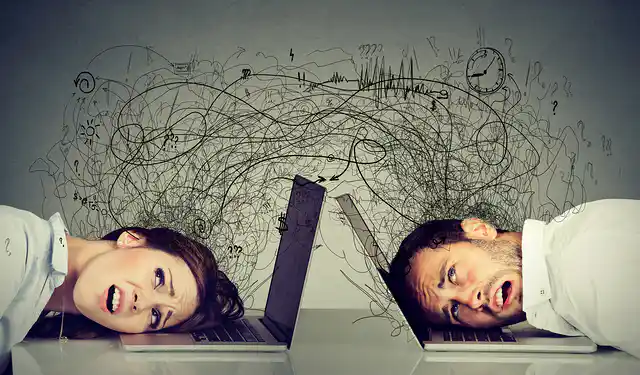
How These Cognitive Biases Lead You To Poor Choices
There are many cognitive biases that lead you to poor choices and decisions, pushed on to you from many different sources, such as social media and ill-informed friends.
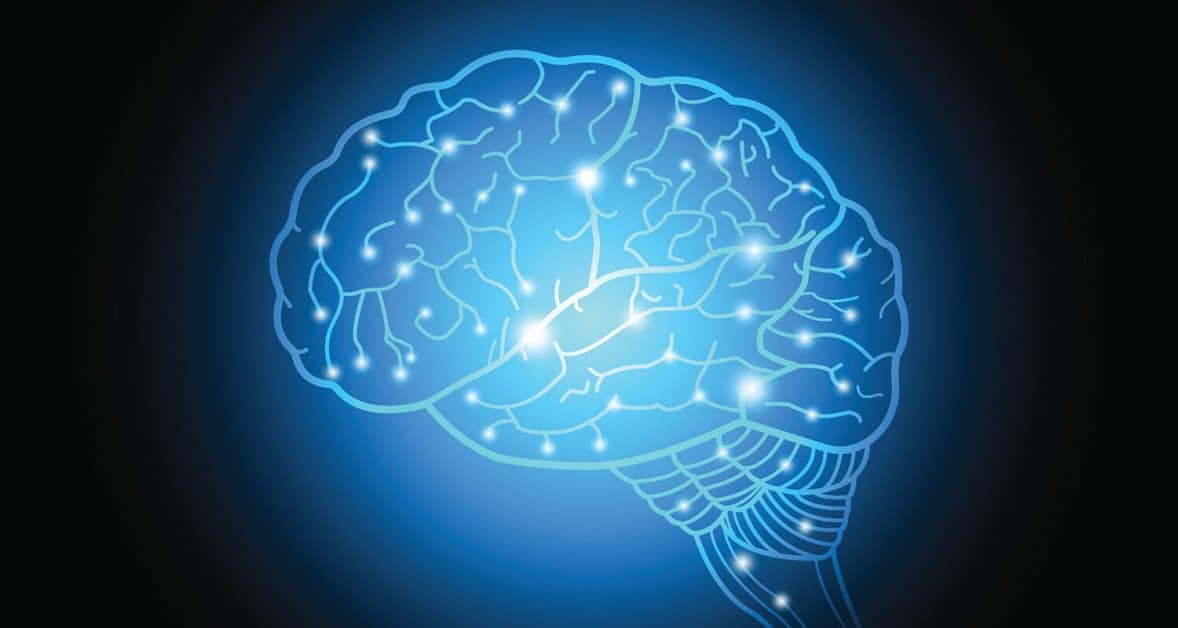
Dopamine is like a computer’s operating system, constantly running in the background at full attention and ready to respond to any information it receives.
In the same way, your dopamine system runs behind the scenes in your brain, waiting for any emotional stimuli to respond to. Whereas a computer will use this information to execute commands, the brain uses it to produce a vast array of thoughts, actions, and decisions.
Dopamine regulates your motivation, drive, energy, and sense of pleasure, often subconsciously without your conscious input. Your decision to read this article right now is a result of dopamine creating the motivation and energy for you to learn something new. Congratulations!
Understanding, regulating, and maximizing our natural dopamine systems are vital to improving our drive and success. Whether we want to eliminate procrastination, reduce negative self-talk, or provide the drive and motivation to strive for greatness, dopamine is the chemical that will pave your way.
This article will cover the fundamentals of dopamine, how it affects our thoughts, feelings, and decisions, and how we can learn to regulate our dopamine levels in a healthy way for optimal benefit.
Dopamine is a neuromodulator – a chemical compound that influences the modulation of many other neurons. You can think of it as a messenger molecule in the brain that allows certain nerve cells to communicate with one another.
This neural communication occurs via two main pathways: the nigrostriatal pathway, responsible for movement, and the mesocorticolimbic pathway, which regulates motivation and reinforcement learning.
Of most interest to us is the reward-seeking behavior that dopamine creates, noticeable in all mammals and even some plants.
While most recognize dopamine as the “pleasure” hormone, psychologists and neuroscientists are particularly interested in how it provides the motivation, drive, and cravings to achieve goals and overcome challenging tasks.
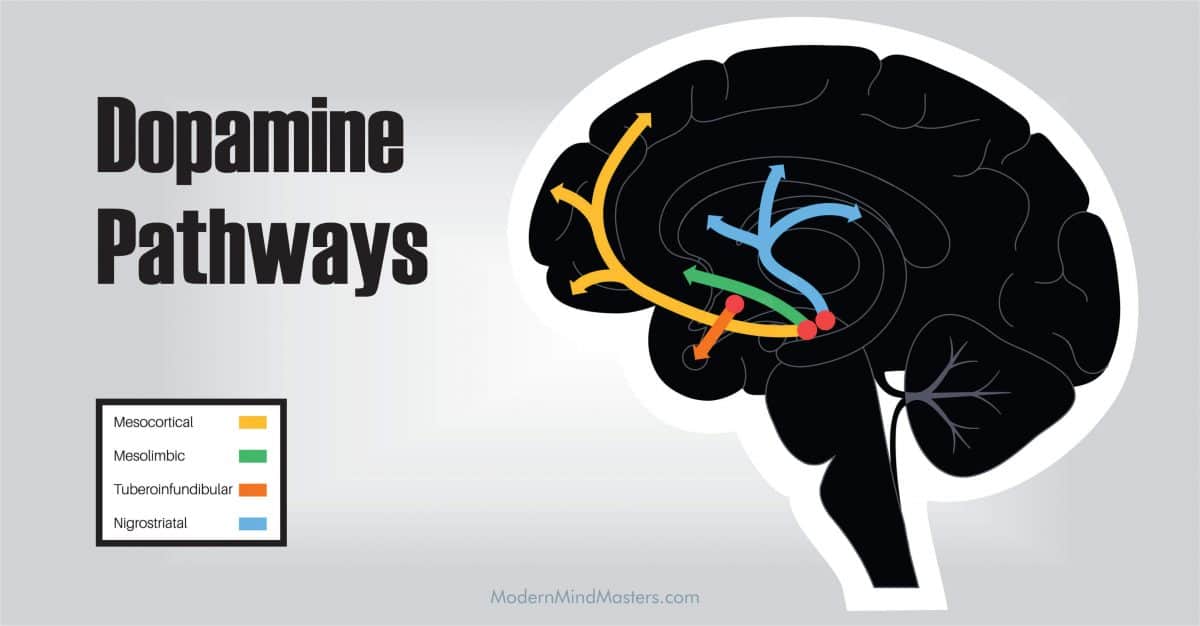
Dopamine provides you with the effort needed to overcome mental resistance. When you don’t want to go to the gym, for example, the release of dopamine (through the anticipation of pleasure or reward) will create the energy needed to overcome this initial resistance. As a result, we feel motivated and driven to achieve a goal despite the short-term pain involved.
This reward-seeking behavior has roots in our Homo sapien hunter-gatherer days when obtaining resources, such as food, wasn’t as simple as it is today, such as a quick trip to the supermarket.
Thousands of years ago, foraging for resources such as food, shelter, and social interaction came with considerable danger. Whether it be territorial disputes, navigating predators, cuts leading to infection, or leaving your dependents alone and vulnerable, we needed the motivation to overcome these risks despite our inherent cravings for safety.
Dopamine is the universal currency for foraging and seeking. It trades the risk of immediate short-term danger for the greater good of longer-term prosperity. It motivates you to expose yourself to danger now so you will have the safety of food and shelter later.
Dopamine is transitory, that is, rises and falls in short periods of time. When elevated, we are filled with greater motivation, drive, and craving to achieve a goal. When low, you will feel bored and lazy, with little motivation to overcome even basic tasks.
You’ll Learn:
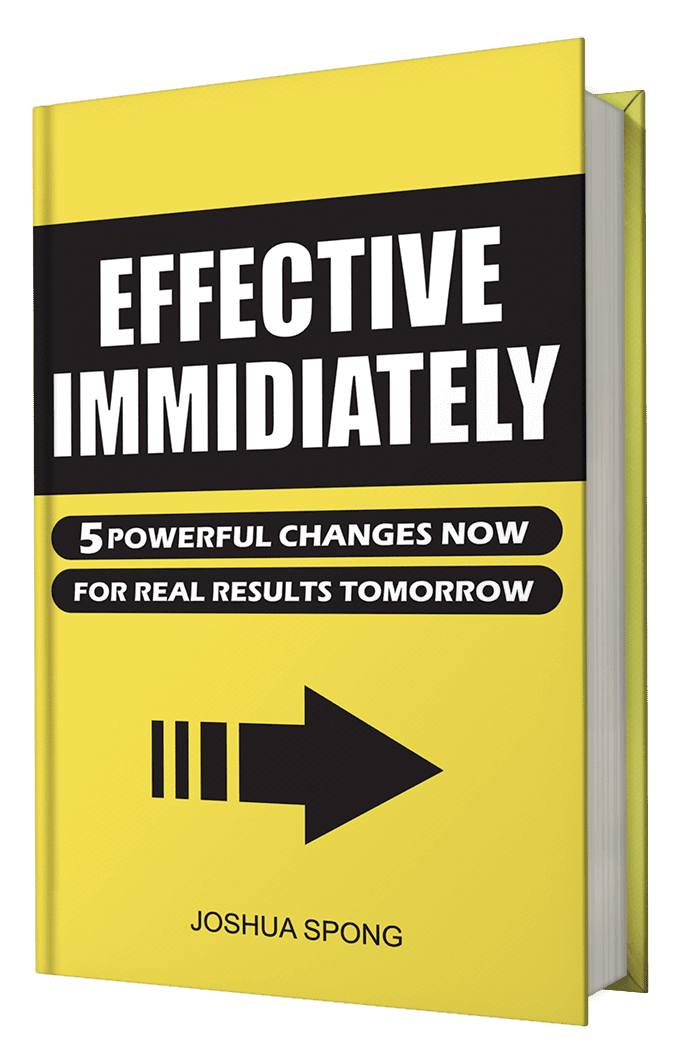
Tonic release can be thought of as the minimum level of dopamine constantly circulating in your system to maintain the body’s basic functions, such as smooth movement and the motivation to get out of bed.
Tonic release creates your baseline level – the minimum level of dopamine circulating in your system to maintain these basic functions. All of us have different baseline levels of dopamine, and while some of this is sure to be genetic, a lot has to do with the fact that dopamine is dependent on other hormones, such as adrenaline.
Phasic release, on the other hand, refers to dopamine induced by pleasurable stimuli, such as watching a good movie or eating a delicious pie. It results in a dopaminergic spike above our baseline level when engaging in or anticipating these pleasurable activities.
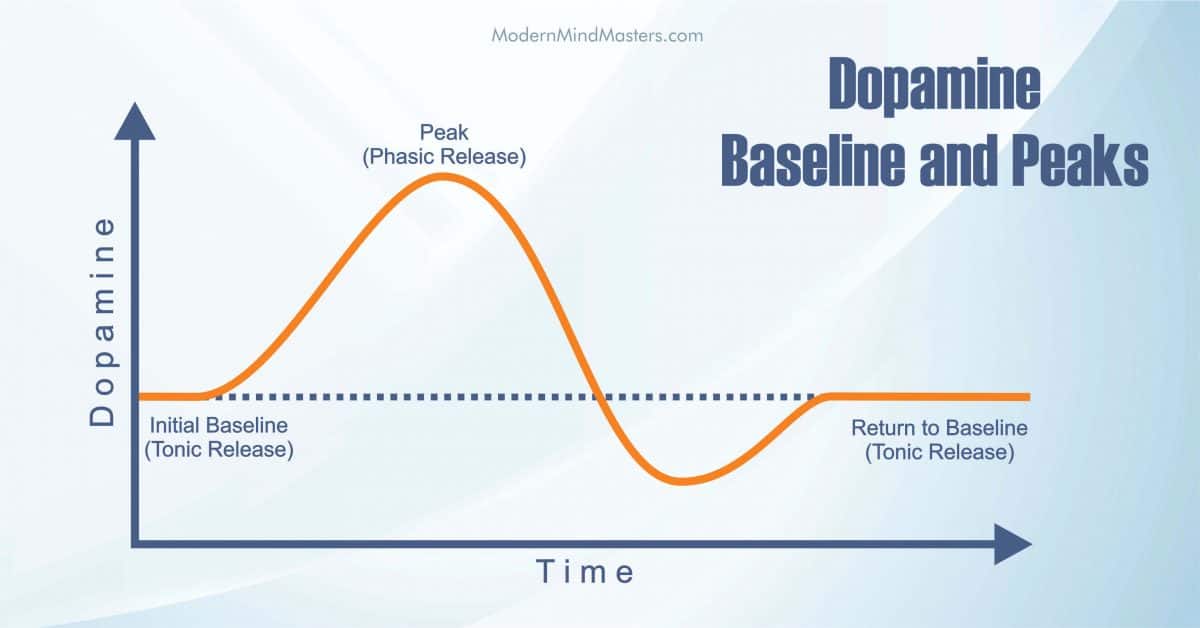
Whereas other neurotransmitters, such as epinephrine (adrenaline), are released very quickly (adrenaline induces the fight-or-flight response to immediate threats) dopaminergic transmission is much slower.
Dopamine must be synthesized from its chemical precursors, and therefore takes time to replenish once our limited dopamine pool is expended. And the more we use, the more we take away from the pool, and the more time is needed to replenish it.
When we experience higher peaks we consume more dopamine than we can immediately replenish, leading to a dopamine deficit that results in a “crash” once the dopamine-inducing activity has finished.
After an intense peak, our dopamine levels transiently drop below the baseline level and lasts as long as it takes to produce enough dopamine to return to our healthy baseline.
As a result, after an intense peak of dopamine, we often feel less motivated than before we started, because we are temporarily in a dopamine deficit.
Because dopamine acts through the two neural networks to regulate our motivation and movement, any subsequent crash below the baseline will compromise these functions.
As a result, when crashing below the baseline, we experience a temporary loss of motivation and movement, lasting as long as it takes for the brain and kidneys to synthesize enough new dopamine to get back to your baseline level.
The degree to which dopamine crashes below the baseline level is proportional to the intensity of the peak. The higher the climb, the greater the fall, and the more time is needed to get back to your healthy baseline level.
It may seem counter-intuitive that when dopamine spikes, and we experience elevated pleasure and reward from an activity, we feel less motivated afterward than before we started.
But by understanding that dopamine can be consumed faster than it can be replenished, and that larger peaks deplete our reserves faster, it makes sense.
We see this dopamine crash in many aspects of life. Marathon runners, for example, often report feeling unmotivated the day after completing a race. Post-partum depression results in a significant deprivation of dopamine that can last days or weeks.
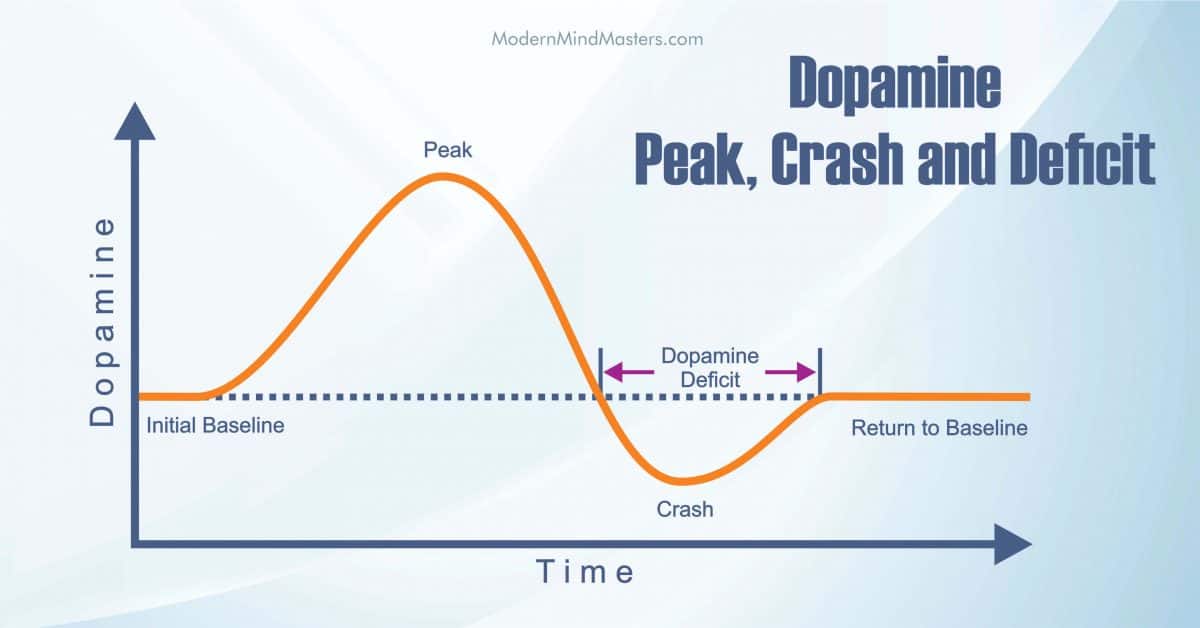
Those with higher levels of dopamine circulating in their system will certainly feel a greater motivation and enthusiasm for behavioral change.
Being motivated and energized to pursue things feels great, and enables the body and mind to obtain enough energy to leave the comfort zone and attain positive change.
But it is not the size of the peak that determines the magnitude of pleasure we experience; rather, it is the difference in height between the peak and the baseline (called the delta), as shown in the image below.
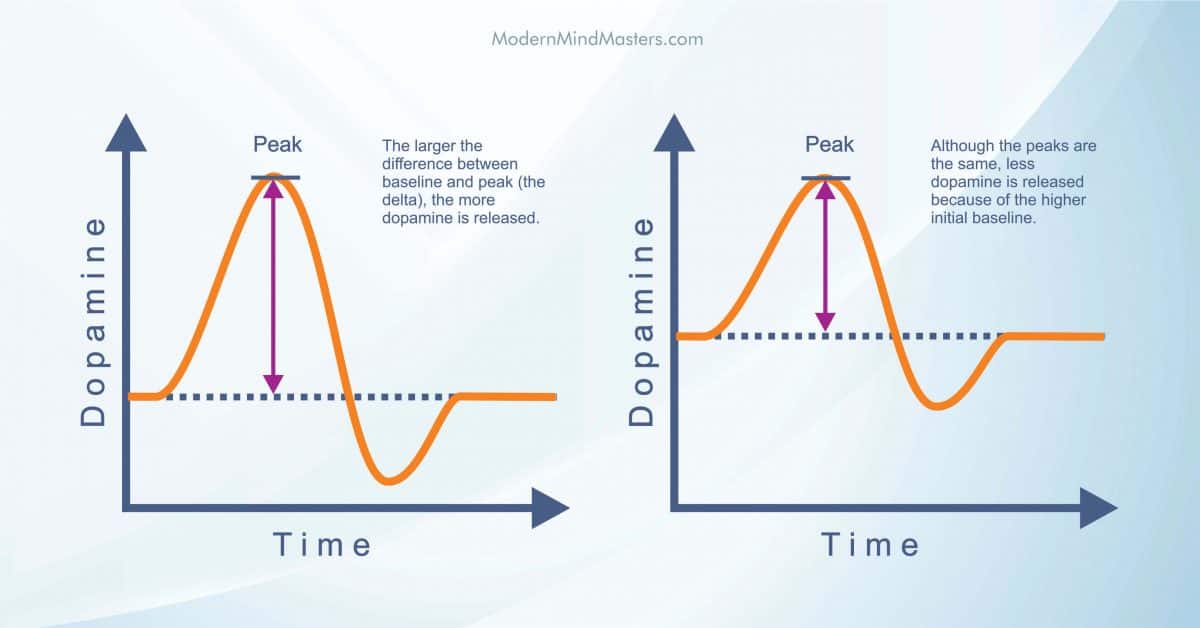
We can see that both graphs peak at the same absolute level of dopamine, but because the left graph has a lower initial baseline, more dopamine is released and hence, more motivation and pleasure.
The graph on the right has a higher initial baseline, so the size magnitude of the peak is less, and less motivation and pleasure are induced.
This debunks the dopamine “hit” myth because a higher peak does not necessarily mean more pleasure and motivation. Rather, it is the difference between baseline and peak that determines the magnitude of pleasure.
Dopamine can be said to have a “history”, that is, the level of dopamine in your system now or in the future depends on past peaks and baseline levels.
For example, if you celebrate the end of a month by treating yourself to your favorite meal, the pleasure you derive from it will be as large as the peak above baseline.
If you had eaten your favorite meal every day that month, however, eating the same meal at the end of the month would not induce as much pleasure. Because your peaks and baseline were repeatedly elevated throughout the whole month, your delta would be considerably less.
When we have multiple dopamine peaks, by riding a rollercoaster followed by watching a movie, for example, the peak from the rollercoaster would likely be large, and the movie that follows would seem boring as a result because it is harder to peak higher than the rollercoaster.
Had you not ridden the rollercoaster first, however, the movie would have been much more pleasurable. Here, your dopamine history interfered with the movie.
David Huberman explains how this interference concept works with social media in the video below:
The benefits of dopamine are enhanced by its sister compound, epinephrine. Also called adrenaline, it is the main chemical driver of neural energy and plays a role in metabolism, attention, focus, panic, and excitement.
If calories are physical energy for the body, epinephrine can be thought of as neural energy for the brain.
As part of the sympathetic nervous system, epinephrine is responsible for the acute stress response, colloquially known as the “fight-or-flight” mechanism triggered by stress.
We can feel the effects of adrenaline when we encounter situations where the mind sharpens, our heart rate rockets, and we have a greater tolerance for discomfort.
Adrenal glands fire a burst of epinephrine in the brain, similar to dopamine, to wake up our neural circuits and place us in a state of alertness.
Epinephrine alone can cause us to panic and is the reason why some mammals freeze in the face of danger. When combined with dopamine, however, the chemical cocktail combines the best of both, causing you to become excited, alert, and ready.
Fortunately, research has shown that when dopamine rises, so too does adrenaline, creating a heightened sense of motivation and drive from the dopamine, coupled with focus and mental energy from epinephrine. It is this state where we often are most productive.
Dopamine is a powerful and critical tool for providing the energy, motivation and drive to complete tasks that have an element of resistance to them (such as tiring exercise or a boring report).
If we abuse or mistreat it, however, we will suffer the effects of dopamine depletion, such as tiredness, procrastination, a lack of motivation, and a lack of energy.
Dopamine isn’t addictive on its own, but it intensifies the pleasure from certain compounds that make these substances more addictive.
It isn’t just drugs that can become addictive, however. Social media, sex, food, and any other pleasurable activity that the body learns to expect more of in the future, can all become a problem.
The problem can be intensified by your dopamine history; the more you repeat a pleasurable task, the less effective it becomes at inducing dopamine. Smokers may need to increase the quantity or potency of their cigarettes to feel the same effects, and alcoholics may need to move on to harder liquors.
The result is either engaging in the addictive behavior more or increasing the potency, leading to a slippery slope of progressive self-destruction that makes addiction so dangerous.
Dopamine crashes below the baseline deprive the brain of adrenaline (neural energy), limiting the ability to promote structural plasticity in the neocortex and nucleus accumbens. Low dopamine states, therefore, limit our ability to learn.
This effect is not permanent but can last a long time (as long as it takes to recover your baseline level of dopamine).
We have to be careful when we choose to peak our dopamine, therefore, because the corresponding crash that inevitably accompanies a rise in dopamine will block our brain’s neuroplasticity, and hence our ability to learn.
Although we may wish to elevate our dopamine levels to induce greater motivation, the corresponding crash that always accompanies leads to a lessened motivation and energy for as long as it takes to recharge back to our baseline, which is not desirable.
We, therefore, need to keep our dopamine levels somewhere in the middle – the sweet spot. This should be high enough to provide the motivation and desire to perform an activity, but not so high that you crash hard afterward.
Our aim is to maintain a healthy level of dopamine while still being able to access those peaks that make life rich and worth living.
One cannot be too precise here, because as we have seen, dopamine levels are not absolute and depend on past levels already in your system.
Improving dopamine levels does not necessarily mean increasing them, but regulating them to healthy levels where your baseline is high enough to maintain healthy background levels for everyday tasks while low enough to create significant peaks when needed.
Remember, it is the difference between baseline and peak that determines the amount of pleasure and motivation you feel, not the height of the peak itself.
The fundamental law of dopamine, that what goes up must come down, means we must be careful in how we regulate it. The higher the peak, the bigger the corresponding dip below the baseline – the area where we are most vulnerable to addiction and depression.
When regularly used, the effect of a dopamine spike, such as a pre-workout or smoking nicotine, reduces each time. To get the same level of dopamine spike and pleasure, we would have to increase the intensity, meaning we must use more pre-workout or smoke more/higher intensity cigarettes.
To prevent this, we need to learn to use these stimulants as tools and not rely on them. This requires us to learn how to schedule our dopamine releases intermittently so that our dopamine history can level out and not interfere with present or future spikes.
Keep your dopamine spikes unpredictable. When you smoke at the same time every day, your brain soon expects that dopamine to spike at the same time, every day. When it doesn’t, you will get that crash and feel unmotivated, and likely give in to your cravings.
By being unpredictable you avoid getting used to a spike, and the activity will give you a greater spike. Taking a pre-workout every day will soon lose its effect, but taking it once one week, and twice another, will keep the spikes independent of past spikes.
Reduce the intensity and frequency of peaks. Remember, the greater the spike, the greater the crash. We want to avoid these extremes and maximize our dopamine delta by keeping our baseline and peaks at lower absolute levels.
Avoid layering multiple levels of dopaminergic activities. When going to the gym, for example, avoid multiple dopamine sources, such as listening to music, taking a pre-workout, and socializing with your friends.
Your brain will soon become accustomed to expecting these massive multi-layered spikes of dopamine, and when it doesn’t get it, such as going to the gym without friends or music, you will feel less motivated than usual.
Removing these layers, and reducing the frequency to keep them intermittent, will prove challenging during the first few days and weeks. You are effectively kicking an addiction by chasing past dopaminergic experiences and expectations.
But when you do, and you learn to intermittently regulate your dopamine, you will receive greater pleasure, motivation, and drive, while minimizing the crash which occurs afterward. You will have more energy and drive and become less dependent on other activities and substances for pleasure.
Dopamine is a powerful tool for motivating you to overcome unpleasant or difficult challenges. But with power comes great responsibility; when abused, it will prove detrimental in the future.
Be mindful of your dopamine baseline level and peaks. When regularly exposed to dopamine-inducing activities, with little time to reset in between, your baseline will raise and the delta between any subsequent peak will not induce as much pleasure or motivation.
After every peak comes a crash. While we want to minimize this as much as possible, it is inevitable to some degree. When you find yourself feeling unmotivated, recognizing that it is a natural biological process should at least help reassure you.
Aim to reduce your dependence on dopamine for those activities where you purposely elevate it. Try a general dopamine detox for a week or two to lower your baseline level. While this may feel unpleasant initially, you should feel able to induce a much greater sense of pleasure for activities where you regulate your dopamine release.
Neuroscience is still exploring the intricacies of dopaminergic effects on the brain, so watch this space for future updates. Until then, use the information above to start working with your body, not against it.
Dopamine is a neuromodulator – a chemical compound that influences the modulation of many other neurons. You can think of it as a messenger molecule in the brain that allows certain nerve cells to communicate with one another.
Dopamine provides you with the effort needed to overcome mental resistance by inducing feelings of pleasure and motivation in exchange for a reward.
Increasing dopamine in absolute terms is not the correct approach. Instead, you need to focus on regulating your dopamine level to a healthy baseline level.

There are many cognitive biases that lead you to poor choices and decisions, pushed on to you from many different sources, such as social media and ill-informed friends.

Habits are the foundation of success and we are merely the result of good habits compounded over time. Here are the best 3 books on habits that will change your life.

Follow these 7 simple steps that work alongside your body to learn how to stop oversleeping.
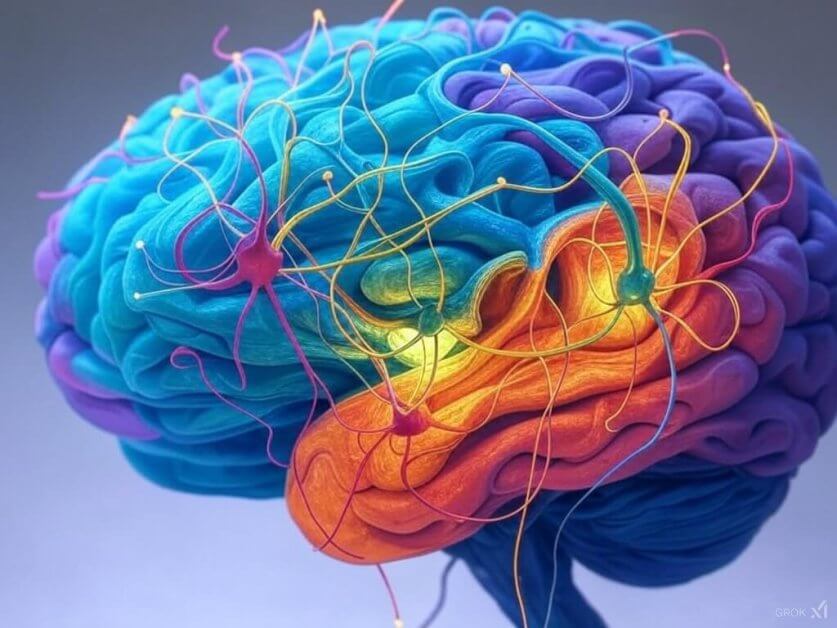
Learn how exercise helps the brain, from reduced inflammation, slowed brain aging, and improved cognitive performance.
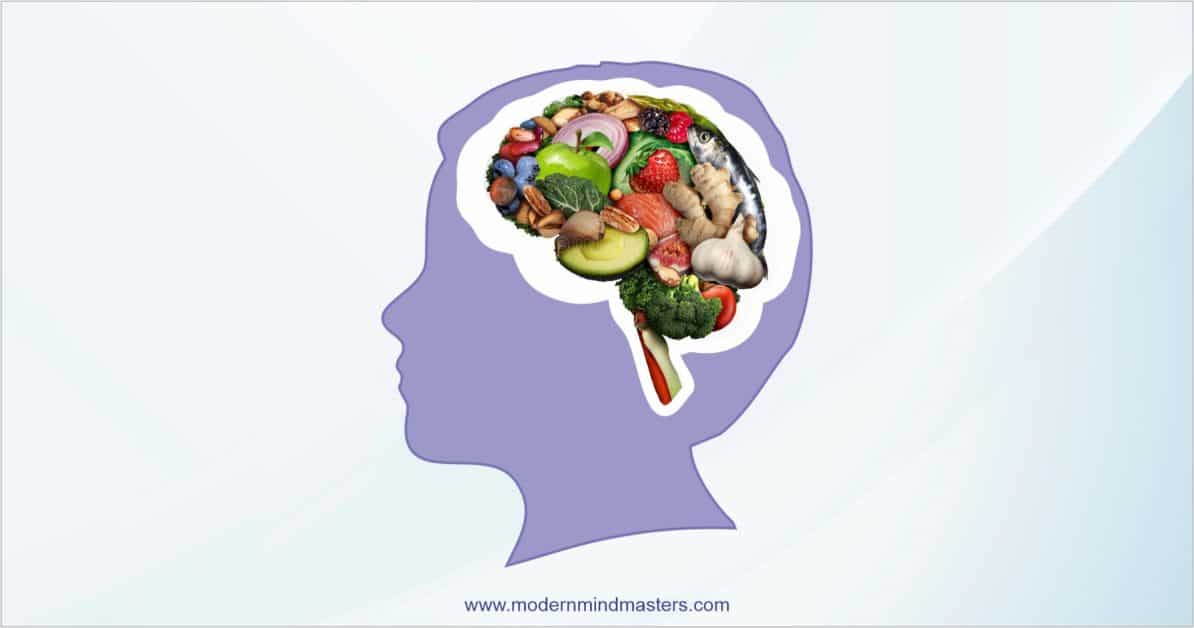
The brain needs many foods for success; a lack of any one of the hundreds of nutrients will result in poor cognitive health and performance.
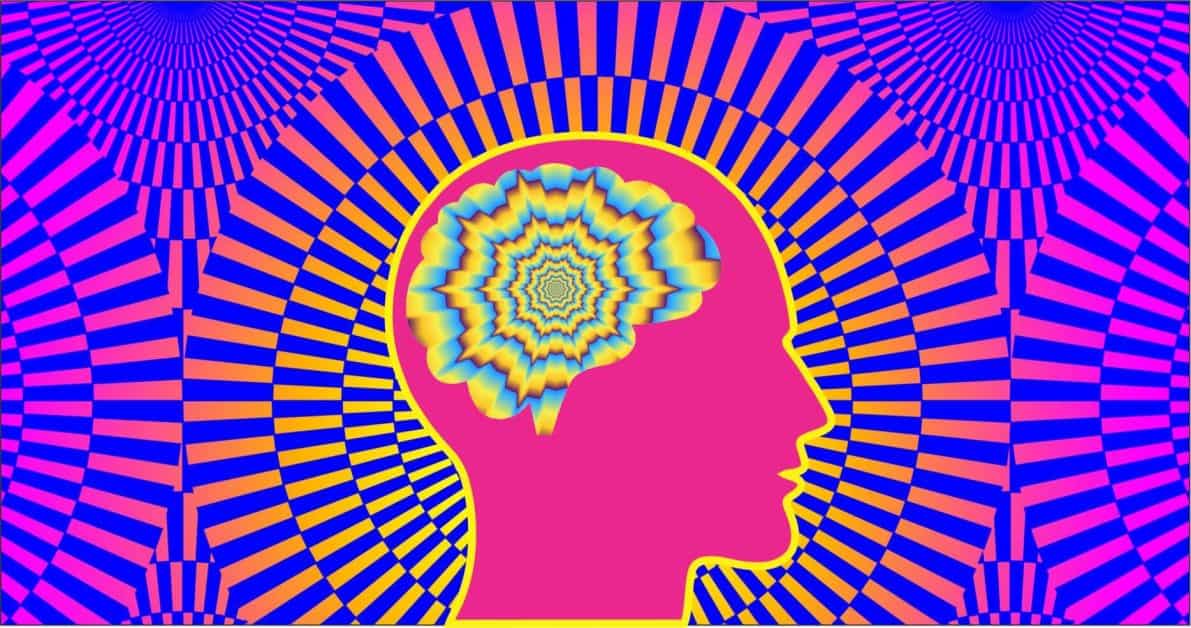
Research on psychedelics has shown a whole host of possible therapeutic benefits for treating mental health, including depression, PTSD and addiction.
© 2025 Modern Mind Masters - All Rights Reserved
You’ll Learn:
Effective Immediately: 5 Powerful Changes Now, To Improve Your Life Tomorrow.
Click the purple button and we’ll email you your free copy.
I wonder how long dopamine synthesis takes. That would play a roll too. Maybe one’s ability to synthesize dopamine (with high receptor availability) is what makes some thrill seekers or have a naturally more energetic personality and tolerance for stimulation.
It’s a good question and you are likely correct; there are some studies that have already correlated higher dopamine synthesis with increased sensation seeking and impulsivity. It is harder to prove a direct link, however, because there are many factors that can influence an individual’s tendency to seek out thrilling experiences, such as genetics, environmental influences, and personal preferences.
Can you please tell me if unexpected intermittent schedule and tolerance to dopamine rewards are related ?
Your dopamine schedule does relate to your dopamine tolerance for rewards. For example, if you reward yourself with a coffee after vacuuming, the value of this reward will diminish the more regularly it is repeated. If you keep the activity, such as vacuuming, random, however, your tolerance to the reward will develop more slowly as your body is unable to predict and crave the next dopamine hit. Thanks.